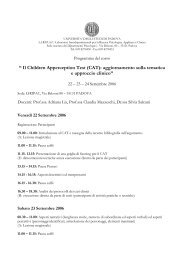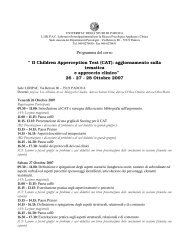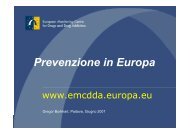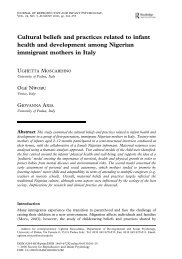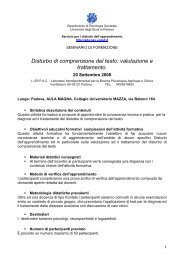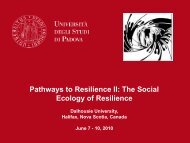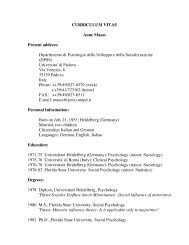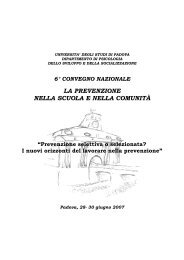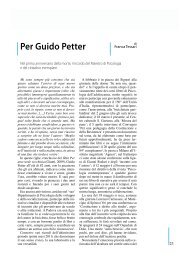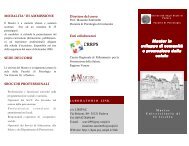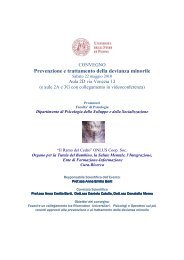Social cognition and moral cognition in bullying: What's ... - DPSS
Social cognition and moral cognition in bullying: What's ... - DPSS
Social cognition and moral cognition in bullying: What's ... - DPSS
You also want an ePaper? Increase the reach of your titles
YUMPU automatically turns print PDFs into web optimized ePapers that Google loves.
not suggest a direct application of the <strong>Social</strong> Skills Deficit model (Crick & Dodge, 1994)<br />
to bully<strong>in</strong>g behavior. Further analyses are needed <strong>in</strong>to the social cognitive competence<br />
of children <strong>in</strong>volved <strong>in</strong> bully<strong>in</strong>g episodes. This is particularly important because theory<br />
of m<strong>in</strong>d explanations per se are not likely to be very helpful for underst<strong>and</strong><strong>in</strong>g the<br />
unique nature of bully<strong>in</strong>g, <strong>in</strong> that hav<strong>in</strong>g a sophisticated theory of m<strong>in</strong>d can lead to<br />
highly prosocial behavior or to bully<strong>in</strong>g behavior. In other words, hav<strong>in</strong>g a “superior”<br />
theory of m<strong>in</strong>d says noth<strong>in</strong>g about how that knowledge will be utilized <strong>in</strong> social<br />
<strong>in</strong>teractions (Arsenio & Lemerise, 2001).<br />
As regards the two other types of stories used <strong>in</strong> the present study, bullies’<br />
performance <strong>in</strong> emotion stories <strong>and</strong> also <strong>in</strong> <strong>moral</strong> stories, a category not used by Sutton<br />
<strong>and</strong> colleagues (1999b), was found to be slightly, but not significantly lower, than the<br />
performance obta<strong>in</strong>ed by other groups. Contrary to our second hypothesis about the<br />
possible difficulties of bullies <strong>in</strong> <strong>moral</strong> <strong>cognition</strong>, our results do not completely confirm<br />
the literature on <strong>moral</strong> development <strong>in</strong> aggressive children <strong>and</strong> bullies (e.g., B<strong>and</strong>ura,<br />
1991; Hart, Burock, London, & Atk<strong>in</strong>s, 2003). In our sample, <strong>in</strong> fact, the bullies <strong>and</strong><br />
their followers did not show a significant lack of ability <strong>in</strong> the attribution of appropriate<br />
<strong>moral</strong> emotions to the characters of the stories. These emotions, such as guilt <strong>and</strong> shame,<br />
play an important role <strong>in</strong> the re<strong>cognition</strong> of the damage suffered by another person <strong>and</strong><br />
are closely connected to the sense of responsibility of the person who shows the harmful<br />
behavior. Moreover, these emotions imply the need of reparation as a consequence of a<br />
negative outcome produced by one’s behavior (Bybee, 1998; Hoffman, 2000).<br />
However, for both emotion <strong>and</strong> <strong>moral</strong> stories, it is important to note that they<br />
actually assess the “cognitive” ability to process emotional <strong>in</strong>formation <strong>in</strong> social<br />
23



